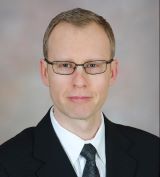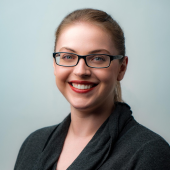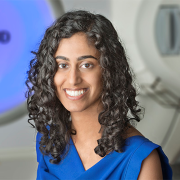Radiation Physics Division
The Radiation Physics division of the Department of Radiation Medicine is staffed by medical physicists who specialize in a variety of cancer treatments including radiotherapy, imaging, tomography and radiology. Our physicists are committed to health and wellness of our patients and the compassion needed for superior care.
Learn more about our faculty and staff below.

Clinical Roles
- Total body irradiation and stereotactic radiotherapy
- MPA coordinator
Projects
- TBI dose calculation in Eclipse
- Track relative dose distribution at extended SSD
- Intra-fraction fiducial tracking
- Detect mid-treatment anatomical changes for prostate SBRT
- Optimization of clinical risk assessment strategies
- Identify training requirements for participants to accurately assess risks in radiation medicine

Ana Dieguez is an Instructor in Medical Physics at OHSU’s Radiation Medicine Department. Born and raised in Guatemala, she obtained a bachelor’s degree in physics from Universidad del Valle de Guatemala and then graduated with a master’s in science from Louisiana State University’s Medical Physics Program, her residency match brought her to the pacific northwest where she has been ever since. At OHSU Ana has participated in didactics for the Radiation Therapy Program and serves as a rotation mentor for the medical physics residency program in Tomotherapy and Imaging Modalities in Radiation Therapy. Her current clinical research focuses include: quality control of imaging for SRS planning, megavoltage structural shielding, and workflow optimization in MIM.

Clinical experience:
- Therapeutic Radiation Physics
- Nuclear Medicine Physics
Interests:
- Use of PET for radiation treatment planning
- Multimodality image registration
- PET image segmentation
- Dosimetry for radionuclide therapy
- Patient-specific dose estimates
- Normal tissue tolerance limits
- Absorbed dose calculation for combined Radionuclide and External beam treatments

Research topics:
- Use of imaging in eye plaques
- Cardiac Ablation
- Treatment Planning System Implementation and Validation
Other Areas of Interest:
- Treatment Planning System Implementation and Validation Methods
- Predicting treatment delivery deviations
- Assessing our department’s patient specific QA paradigm
- Integrating all possible information

I am actively engaged in several critical areas within our clinical operations, including treatment planning commissioning and maintenance, developing and updating clinical protocols, overseeing various informatics and coding projects, and performing specialized brachytherapy procedures. My research interests lie primarily in informatics, with a focus on creating an automated data retrieval system that supports both research projects and clinical objectives. I am also developing AI-driven methods for detecting patient setup errors and preventing the misadministration of radiation, aiming to enhance both safety and precision in radiotherapy. In addition, I am working on adaptive radiotherapy techniques and CSI workflows to make our treatments more responsive to individual patient needs.
Looking ahead, I am interested in harnessing clinically derived data and natural experiments to answer pressing clinical questions that could drive improvements in quality of care. This will offer students opportunities to participate in impactful projects that combine data science and clinical applications to advance patient care in radiotherapy.

Mr. Aguilera received a Bachelor of Science from Oregon State University and a Master of Science from the Georgia Institute of Technology. He has been a clinical medical physicist for over thirty years.
Mr. Aguilera has worked at OSHU since 2015 and currently covers a rural radiotherapy facility 90 miles east of Portland at the Mid-Columbia Medical Center, in The Dalles, Oregon. He has interests in all aspects of clinical medical physics.

Dr. Erika Kollitz received her PhD from Ludwig Maximilian University of Munich for her work on predicting out-of-field dose and second cancer risk using patient-specific whole-body computational phantoms. She then completed her residency at the University of Florida in Gainesville, where working with the Elekta Unity MR-Linac led to an interest in online adaptive radiotherapy.
Dr. Kollitz’s current interests include adaptive RT, medical physics education (patients, graduate programs, and residents), and other professionalism topics such as international equity, CAMPEP accreditation, and the ABR board certification process. She is actively involved in the AAPM and regularly participates in medical physics/STEM outreach programs. In the clinic, she contributes to the EBRT, TBI, and HDR brachytherapy programs

Current Responsibilities
- Started at OHSU in 2022
- General clinical obligations
- Perform chart checks to make sure treatment patient receives corresponds with what was intended
- Assess quality of treatment after changes in anatomy, setup, or planning parameters
- Incorporating and assessing new technologies
- Teach MP 562: Physics of Radiation Therapy II
Current Clinical Responsibilities
- HDR brachytherapy physicist
- Manage new patients and assess prior irradiation
- Create treatment plans
- Deliver treatments for each fraction
- Perform QA and commission new equipment
- Perform eye plaque implants/explants
- Planning and ordering sources
- On implant day, provide support in OR, supply sources, and perform surveys
- Provide radiation safety instructions to caretakers
- On explant day, retrieve source to send back to vendor
- Create post-plan to determine quality of implant
Research
- Past projects have covered texture analysis and radiomics
- Assessing functional lung tissue change due to radiation
- Quantifying effect of metal artifact reduction techniques on CT image quality
- Also includes implementation of deformable image registration in brachytherapy workflow

Junan Zhang has a focused interest in radiation physics, particularly in the use of spectrometers and densitometers for in-vivo film dosimetry, GE cine mode 4D CT sorting for capturing respiratory motion, and the integration of surface guidance with respiratory motion management for precise radiation therapy delivery.

Graduate student projects:
Motion management
- Techniques that account/mitigate body movement during treatment immobilization
- Respiratory gating/breath hold/compression
Active Breathing Coordinator (ABC)
- Internal immobilization using external device
- Minimizes respiratory motion through imaging and delivery
- Reduces doses to organs at risk (OARs)
Evaluation of Motion Management
- Evaluate reproducibility of breath hold at OHSU
- Quantify ABC lung volume vs CT/CBCT lung volume (Liver and Lung stereotactic tx)
- Determine appropriate lung volume metrics
- Evaluate accuracy of ABC
- Identify best use cases
- Compare voluntary breath hold vs ABC managed breath hold

Associate Professor in the Department of Radiation Medicine
Medical physics program roles:
- Lead therapy summer practicum
- Guest lectures on clinical life and dosimeters
Clinical specialties/Research:
- Radiation medicine informatics
- Enhancing workflow in radiation oncology (automation, communication, etc)
- FMEA/Incident Reporting
- Dosimetry - Metrology
- MHC-matched, allogeneic hematopoietic stem cell transplantation in non-human primates
Possible Graduate Projects:
- Informatics/ Automation clinical projects.